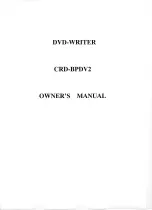
A-12
App. B Effect on Insulation of General-purpose Motors
Driven with 400 V Class Inverters
- Disclaimer: This document provides you with a summary of the Technical Document of the Japan
Electrical Manufacturers' Association (JEMA) (March, 1995). It is intended to apply to the domestic
market only. It is only for reference for the foreign market. -
Preface
When an inverter drives a motor, surge voltages generated by switching the inverter elements are
superimposed on the inverter output voltage and applied to the motor terminals. If the surge voltages
are too high they may have an effect on the motor insulation and some cases have resulted in
damage.
For preventing such cases this document describes the generating mechanism of the surge voltages
and countermeasures against them.
Refer to A.2 [1] "Inverter noise" for details of the principle of inverter operation.
B.1 Generating mechanism of surge voltages
As the inverter rectifies a commercial power source voltage and smoothes into a DC voltage, the
magnitude E of the DC voltage becomes about
2
times that of the source voltage (about 620 V in
case of an input voltage of 440 VAC). The peak value of the output voltage is usually close to this
DC voltage value.
But, as there exists inductance (L) and stray capacitance (C) in wiring between the inverter and the
motor, the voltage variation due to switching the inverter elements causes a surge voltage originating
in LC resonance and results in the addition of high voltage to the motor terminals. (Refer to Figure
B.1)
This voltage sometimes reaches up to about twice that of the inverter DC voltage (620 V x 2 =
approximately 1,200 V) depending on a switching speed of the inverter elements and wiring
conditions.
Figure B.1 Voltage Waveform of Individual Portions
A measured example in Figure B.2 illustrates the relation of a peak value of the motor terminal
voltage with a wiring length between the inverter and the motor.
From this it can be confirmed that the peak value of the motor terminal voltage ascends as the wiring
length increases and becomes saturated at about twice the inverter DC voltage.
The shorter a pulse rise time becomes, the higher the motor terminal voltage rises even in the case of
a short wiring length.
Summary of Contents for FRENIC-AQUA series
Page 1: ...MEHT538b...
Page 2: ...User s Manual...
Page 13: ......
Page 15: ......
Page 33: ......
Page 35: ......
Page 61: ...2 26 Figure D Figure E NC No connection Do not make wiring NC NC...
Page 63: ...2 28 Figure J Figure K Charging lamp Charging lamp Viewed from A...
Page 83: ...2 48 Unit mm FRN45 to 55AQ1 4...
Page 84: ...2 9 External Dimensions 2 49 Chap 2 SPECIFICATIONS Unit mm FRN75 to 90AQ1 4...
Page 85: ...2 50 Unit mm FRN110AQ1S 4 FRN132AQ1S 4 FRN160AQ1S 4 FRN200AQ1S 4...
Page 87: ...2 52 Unit mm FRN500AQ1S 4 FRN630AQ1S 4 FRN710AQ1S 4...
Page 88: ...2 9 External Dimensions 2 53 Chap 2 SPECIFICATIONS 2 9 2 Keypad Unit mm Panel cutout...
Page 95: ......
Page 140: ...4 4 Options 4 33 Chap 4 SELECTING PERIPHERAL EQUIPMENT...
Page 279: ......
Page 281: ......
Page 341: ...6 60 Example of Thermal Overload Detection Characteristics...
Page 637: ......
Page 639: ......
Page 651: ...7 12 Figure 7 7 Terminal FM2 Output Selector...
Page 653: ......
Page 663: ......
Page 665: ......
Page 699: ......
Page 717: ......
Page 719: ......
Page 733: ......
Page 749: ......
Page 751: ...MEHT537 Phone 81 3 5435 7058 Fax 81 3 5435 7420 Printed in Japan 2012 08 H12b b12 CM00FOLS...







































